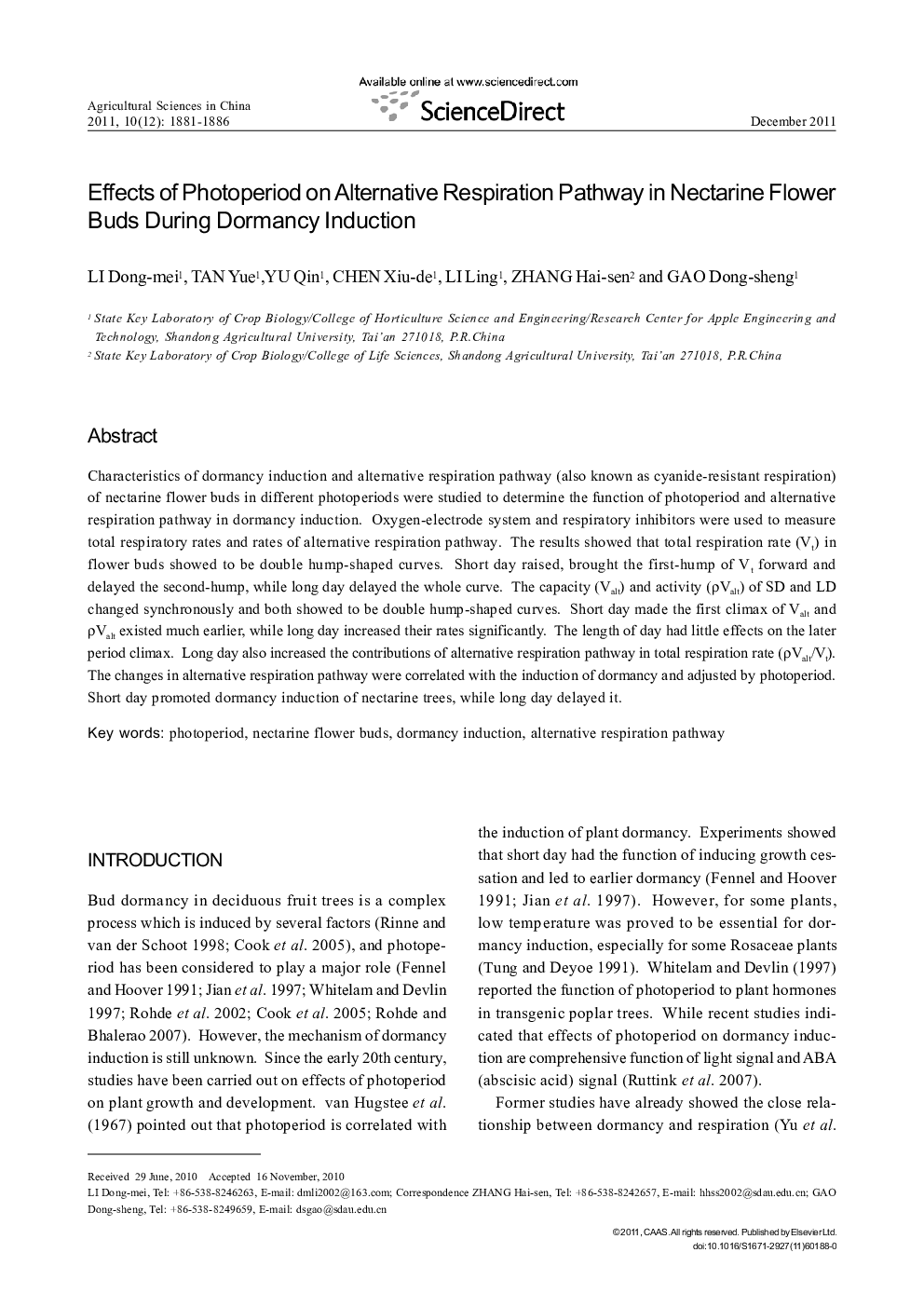| Article ID | Journal | Published Year | Pages | File Type |
|---|---|---|---|---|
| 4489779 | Agricultural Sciences in China | 2011 | 6 Pages |
Characteristics of dormancy induction and alternative respiration pathway (also known as cyanide-resistant respiration) of nectarine flower buds in different photoperiods were studied to determine the function of photoperiod and alternative respiration pathway in dormancy induction. Oxygen-electrode system and respiratory inhibitors were used to measure total respiratory rates and rates of alternative respiration pathway. The results showed that total respiration rate (Vt) in flower buds showed to be double hump-shaped curves. Short day raised, brought the first-hump of Vt forward and delayed the second-hump, while long day delayed the whole curve. The capacity (Valt) and activity (ρValt) of SD and LD changed synchronously and both showed to be double hump-shaped curves. Short day made the first climax of Valt and pValt existed much earlier, while long day increased their rates significantly. The length of day had little effects on the later period climax. Long day also increased the contributions of alternative respiration pathway in total respiration rate (ρValt/Vt). The changes in alternative respiration pathway were correlated with the induction of dormancy and adjusted by photoperiod. Short day promoted dormancy induction of nectarine trees, while long day delayed it.
